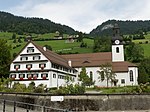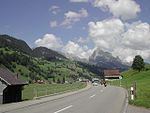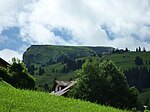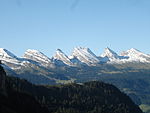Thur waterfalls
Landforms of the canton of St. GallenThur (Rhine) basinWaterfalls of Switzerland
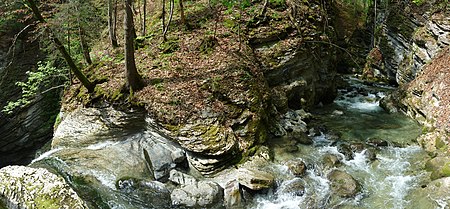
The Thur waterfalls are two cascades located on the river Thur approximately ten minutes walking from the village square of Unterwasser in the canton of St. Gallen, Switzerland, The water cascades down from steep rock faces, and on highest point drops from 23 metres (75 ft). The road along the waterfalls was developed in 1927 and includes three observation decks.
Excerpt from the Wikipedia article Thur waterfalls (License: CC BY-SA 3.0, Authors, Images).Thur waterfalls
Nesselhaldenstrasse, Wildhaus-Alt St. Johann
Geographical coordinates (GPS) Address Nearby Places Show on map
Geographical coordinates (GPS)
| Latitude | Longitude |
|---|---|
| N 47.202311111111 ° | E 9.3117722222222 ° |
Address
Nesselhaldenstrasse
9657 Wildhaus-Alt St. Johann
St. Gallen, Switzerland
Open on Google Maps

